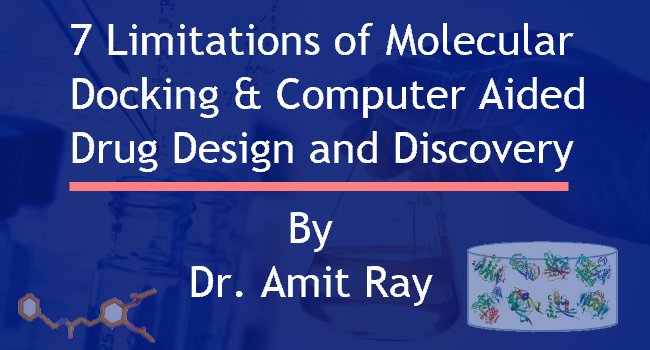7 Limitations of Molecular Docking & Computer Aided Drug Design and Discovery
7 Limitations of Molecular Docking & Computer Aided Drug Design and Discovery
Over the past decades, molecular docking has become an important element for drug design and discovery. Many novel computational drug design methods were developed to aid researchers in discovering promising drug candidates. In the recent years, with the rapid development of faster architectures of Graphics Processing Unit (GPU)-based clusters and better machine algorithms for high-level computations, much progress has been made in areas such as scoring functions, search methods and ligand-receptor interaction for living cells and other approaches for drug design and discovery.
A large number of successful applications have been reported using a variety of docking techniques. However, despite their success in academic environment for concept validation, their real life application is very limited. There are many obstacles and number of issues remain unsolved. In this article Dr. Amit Ray, explains the key obstacles and challenges of molecular docking methods for developing efficient computer aided drug design and discovery (CADD) methods. Dr. Ray argued incomplete understanding of the underlying molecular processes of the disease it is intended to treat may limit the progress of drug discovery. Here, the seven limitations of present CADD methods are discussed.

In vivo, In vitro and In silico: Experimentation for Drug Discovery
Experimentation for Drug Discovery pathways are classified into three groups: in vivo, in vitro and in silico. … Read more..